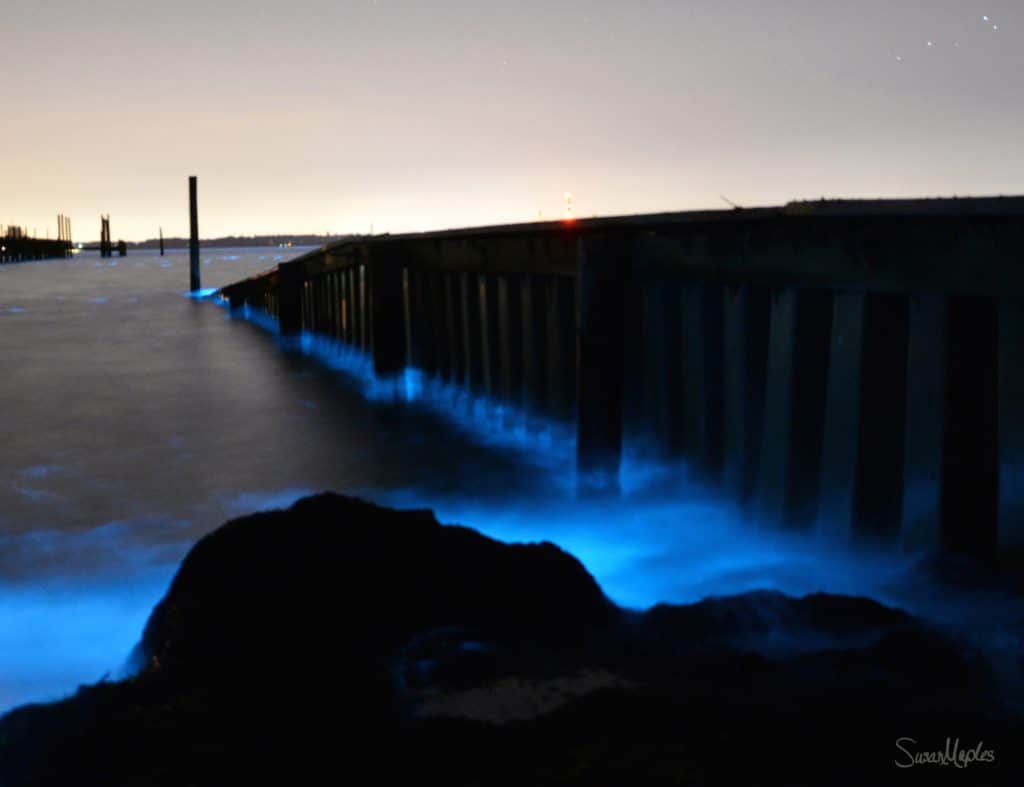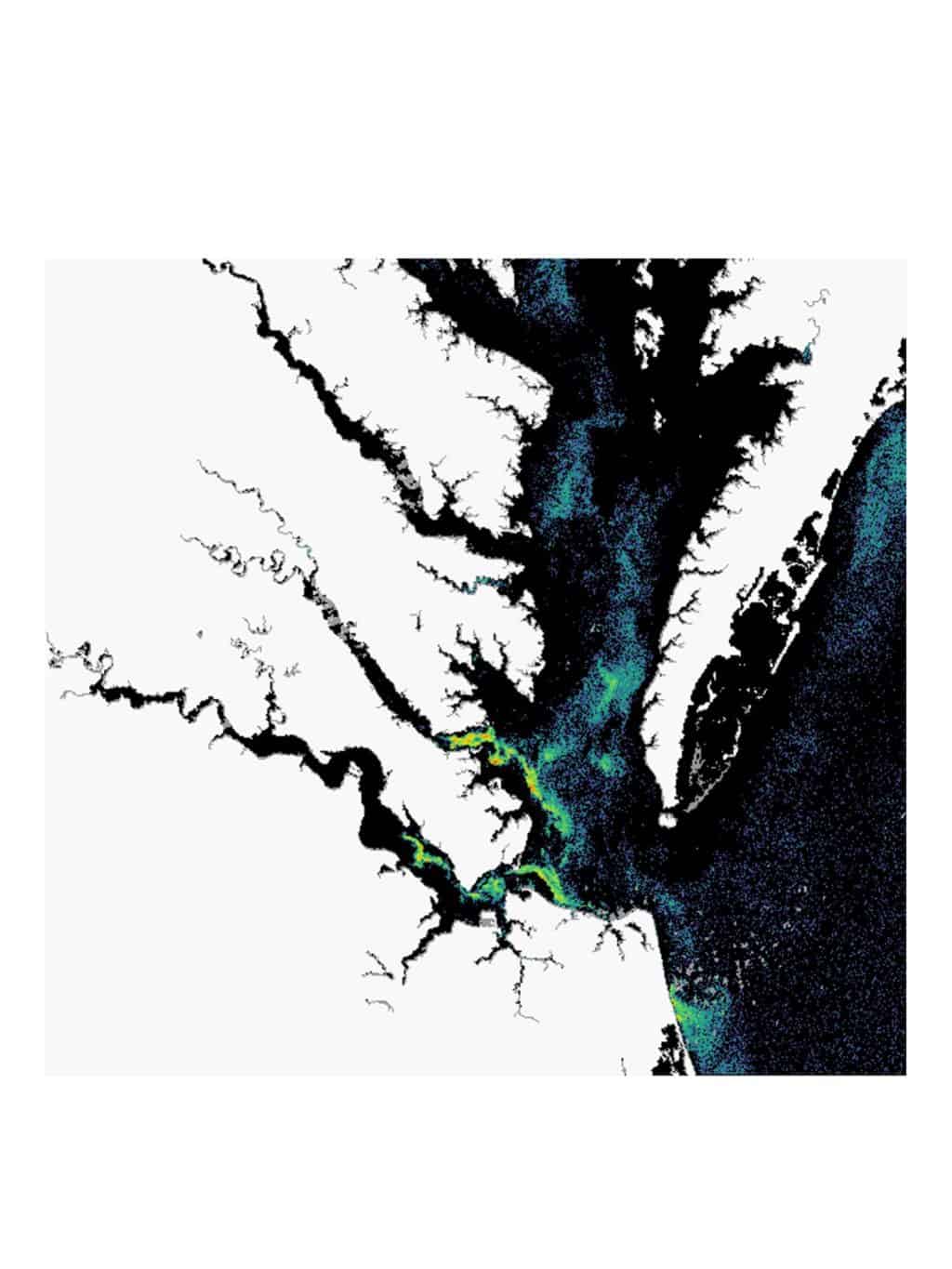There’s a four-mile long algal bloom in the Bay, and although its nightly light show may be mesmerizing, the public is advised to steer clear.
Kimberly Reece, Chair of Aquatic Health Sciences at the Virginia Institute of Marine Science (VIMS), has been working with the National Ocean and Atmospheric Association (NOAA) to track and study algal blooms in the Chesapeake Bay. She reports that the large patch is in the York River, near the Coleman Bridge. Other patches have popped up in both Hampton Roads and in the James River.
The mahogany-colored blooms that have been spotted are officially known as “Alex” (short for Alexandrium monilatum). Another type of bloom called “Marg” (Margalefidinium polykrikoides) has also made an appearance or two in the Bay this summer.

Alex might not be much to look at during the daylight hours, but at night, the organism glows in the dark, lighting up the water as it floats on the surface. “We aren’t sure what the purpose of bioluminescence is for Alex,” says Reece, “but it is a fascinating and beautiful phenomenon to observe.”
As intriguing as it might look, the algae poses a threat to some Bay species.
“Alex does produce toxic compounds that can harm aquatic life,” Reece explains. “Specifically, we have had some reports of shellfish mortalities with the Alex blooms in the area.”
While the mortalities could be caused by the low oxygen levels in the water (brought on by the stress of the bloom), Reece says it’s a definite possibility that the toxic compounds could be to blame. If you come across Alex or any discolored water, Reece recommends keeping your distance, especially since there’s still a lot to learn about the algae’s effects on people.
“It’s best to not be in it. When in doubt, stay out,” says Reece.
To help the public and researchers keep tabs on the blooms, the Virginia Department of Health has a “Swim Healthy Virginia” page where people can report fish kills, deceased shellfish, or signs of the bloom. Reece says Marg has been found in the lower Bay during the late summer since the 1990’s, but Alex was much less frequent over the decades until 2007, when a large bloom appeared. Since then, both have been spotted in Chesapeake waters many times.
The blooms are at the mercy of the winds, currents, and tides, so their locations are subject to change and their lifespans can’t be predicted. They typically can remain 1.5 weeks to upwards of a month, depending on the conditions, Reece says.
“We still do not understand all the environmental parameters that are required to initiate and maintain a bloom,” says Reece, noting that researchers still have a lot to learn about Alex and Marg. “We do know that temperature and salinity are important, but light, nutrients, wind
patterns and other parameters are also involved. We are doing studies to better understand how these different parameters contribute to the bloom.”
Rising temperatures might be one reason the number of blooms have increased over the years. Reece says that Alex is common in the Gulf of Mexico, where water temperatures are higher, and is associated with fish kills and shellfish mortalities there. “We’re not sure if maybe the
waters here have become a little warmer and more favorable for it to bloom more frequently.”
Reece wants to better understand Alex not just for the obvious reasons, but also for the benefit of shellfish growers, whose products are threatened by harmful algal blooms. “(We’re) really trying to help them because I know they really work hard out there. They’re making a great product and
we’re trying to help them keep that product alive. I don’t want to see them suffer again with this bloom out there, so we try to keep them at least informed.”
-Laura Adams Boycourt




